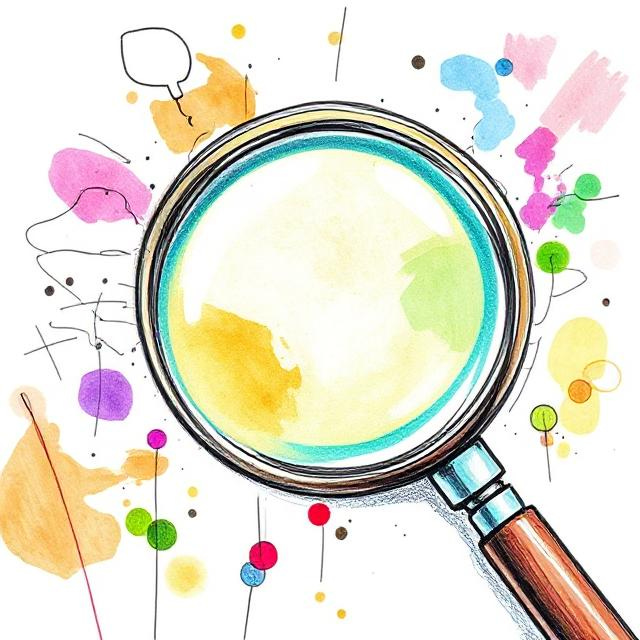How the news is made
And how to make the news
Last week, I wrote about the role and objective of PR for businesses, politicians and causes: to attract attention, shape opinion and influence behaviour.
In that endeavour, its most often used tool is the news. And that makes sense: the news has reach: thousands of readers, viewers and listeners. It’s independent - so it is more credible and believable than an advert. And it’s trusted and an authority, so audiences value what it says and are influenced by it.
At least, all of that used to be true. Newspapers and traditional outlets have a dwindling audience as more people turn to influencers, podcasts and social media for their news. The most neutral sources are losing audiences, as people turn away from impartiality and towards hyper-partisan outlets that are forthright with their perspectives.
There’s rapidly declining trust in traditional media. Only about a third of Brits say they trust the media: it’s no longer a given that appearing in the news is a surefire way to add credibility to your message.
I won’t dwell on it too long, because that’s not what this post is about - but what this tells you is that, for PR to survive as an industry, it needs to unshackle itself from traditional news and start reaching audiences through non-traditional means (including creating its own platforms).
But, today, there is a role for the news. Despite the direction of travel: millions of people watch the news, and they implicitly trust it more than they might admit in surveys. So - how does it work, and how do you get in it?
Where does the news come from?
The big secret of news is that almost all of it comes from a service called the wire. Organisations like Reuters and the Associated Press have huge newsgathering teams based all over the globe, and sell their reports to national newspapers, broadcasters and radio stations.
The news outlet rewrites it (sometimes adding spin relevant to its own audiences - like a local angle) and publishes it.
The majority of the output you watch, read and listen to was first gathered by one of these tiny numbers of wire services.
Governments, monarchies and big publicly listed companies will often give their stories to the wire services first to get the quickest dissemination across global newsrooms.
But journalists aren’t just rewriting wire copy all day long. While the wire provides the majority of news, the most meaningful stories often come from other sources.
Journalists will engage in in-house newsgathering: using their full toolkit of journalistic techniques to find, gather and produce stories.
There are several ways to do this. The Freedom of Information Act, a piece of legislation invented and quickly regretted by Tony Blair, allows any member of the public to request any piece of information held by any public body: including boring stuff like aggregate data, but also interesting stuff like emails and texts sent by public figures.
Journalists will have contacts across government, business and the community who may give them insight into interesting happenings, or leak tidbits about where to dig into a story.
Social media is now a major source of newsgathering. Joe Biden, for example, announced that he was stepping down from the presidential race not via the wire or a press conference: but via X (formerly Twitter).
And then, of course, there are PR people. PR professionals are a key source of news for journalists: providing stories about the businesses or people they represent (and, occasionally, bad ones about their competitors). The stories that a PR person sends are, of course, designed to be positive: but the journalist can report on it however they like.
Who works in news?
The number of people working in a newsroom is rapidly dwindling. The British media landscape has always been run slightly leaner than its American counterpart (where newspapers often employ fact-checkers to read stories and verify every fact: right down to the colour of an interviewees’ socks), but now the number of people you’ll see in an office is tighter than ever: and journalists have to be multi-skilled to survive.
In print or magazine journalism (or any sort of journalism where words are the primary output), you’ll find reporters. They find and write the stories, often working in a particular ‘patch’ or ‘beat’ (which might be a local area or specific topic like education). The next level up is an editor, who traditionally has the final decision about what gets in their publication or section, then finalises the copy and checks for legal issues. But more and more, editor is just becoming shorthand for a more experienced reporter, since smaller teams mean there is not much for them to ‘edit’ that they themselves haven’t written.
On top of those roles (where budgets allow) will be photo editors, layout artists and graphic designers - among other roles.
Increasingly important to the modern newsroom is a marketing team: who will develop partnerships with private enterprise to place ‘advertorials’: news articles that look like any other, but are actually paid placements written by and for a client.
In broadcast, jobs are split into journalism and technical roles (though, again, more and more of those working in broadcast news will be expected to do both).
On the journalism side, producers or planners develop the story ideas, identify the guests and locations and coordinate the reporters and tech crew (like camera operators).
Reporters do some of this, but are primarily out and about filming the ‘packages’ and editing them together for the news programme.
Presenters typically have the smallest role in the news operation (though they’ll sometimes develop their own stories), but they need to be carefully prepped on each story: especially if they are interviewing a key figure.
How to make the news
Journalists want stories that are interesting, important, relevant and - ideally - a scoop. They are inundated with story ideas: both from professional PR people, but also the public (“why aren’t you reporting on the scandal of the pothole down my road!”) and even family and friends (“you should do a story on our cat…”).
Crafting something that gets their attention is the key to getting in the news. And bonus points if it’s easy: if most of the work is done for them.
And there are two things most journalists want more than anything else: people and pictures.
Almost every story needs a human element: someone who can provide quotes, or real experience. If a newspaper is running a story on the cost of living crisis, they need someone who has started buying Tesco Value milk rather than Cravendale to comment on it. When they don’t have a person, they head out onto the street to gather the opinion of passers-bys for “vox-pops”.
And, especially in television but even in newspapers and online, most stories need a picture. For broadcast, that means some sort of action they can film. The surge of stories about artificial intelligence has created a real dilemma, here, as there’s not much you can film when it comes to chatbots. Newspapers and online media outlets are stretched thin, and don’t have the means to send photographers out to every story: so a story that comes with high quality photography already done is gold-dust.
Once you have the ingredients of a story, the final step is to send it to a journalist. Personally knowing journalists is useful, but it’s less and less important by the day in media and PR: low pay and redundancies mean that journalists churn out of the career and between newspapers incredibly quickly, and a great contact one day is on a totally different beat the next.
The whole landscape is changing fast. By some estimates, there are now 6 PR people for every 1 journalist. Everyone is desperate to get in the news, but it’s getting harder and harder and less and less valuable. What was once the most surefire way to reach audiences and shape opinion must now be just one approach.



